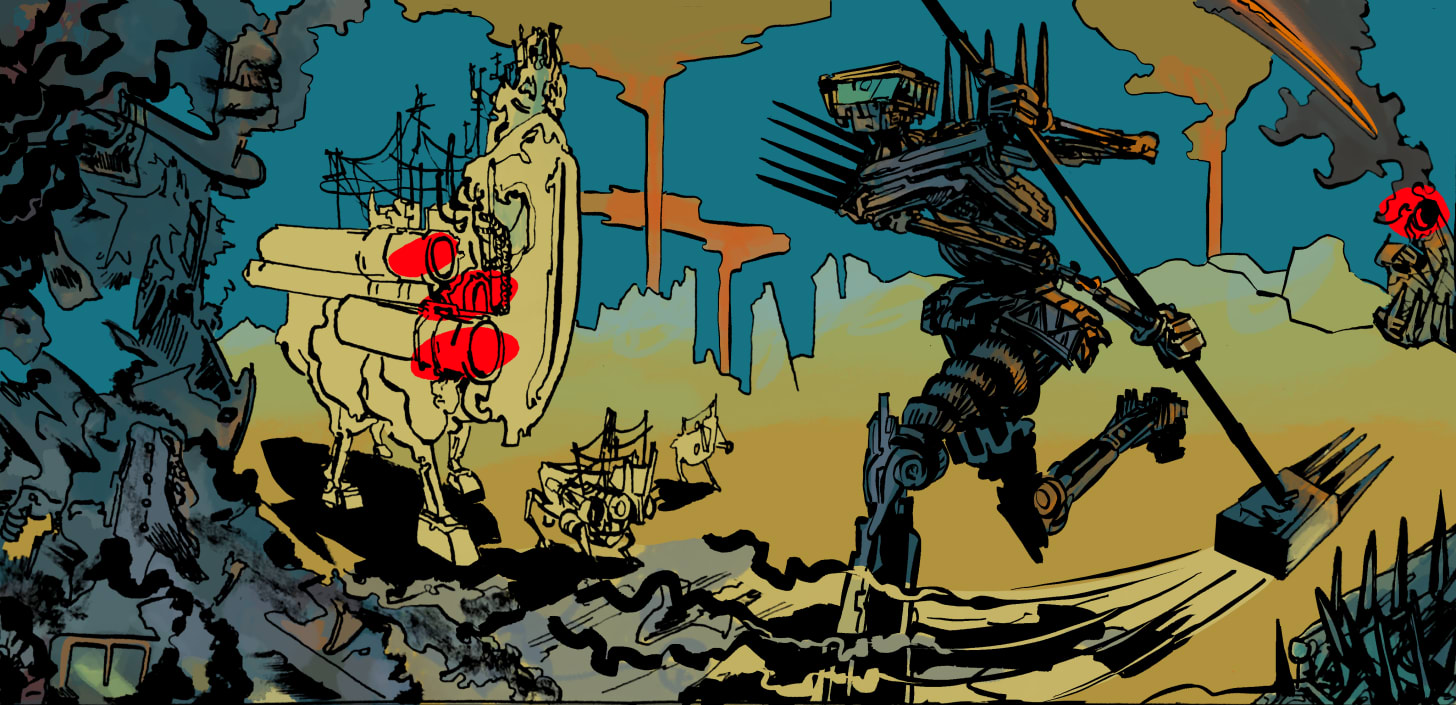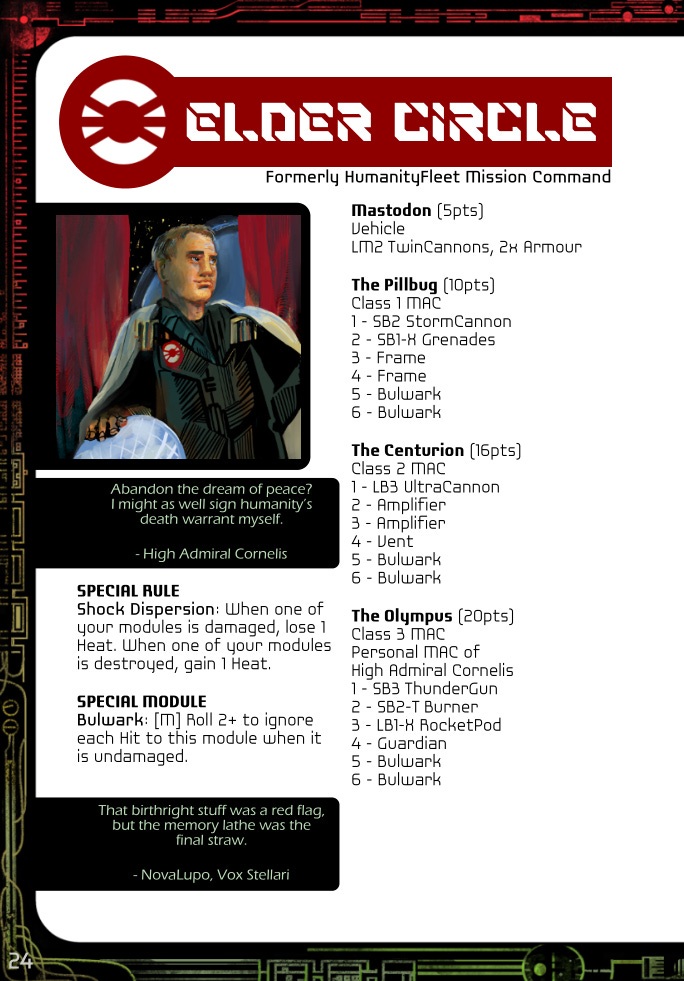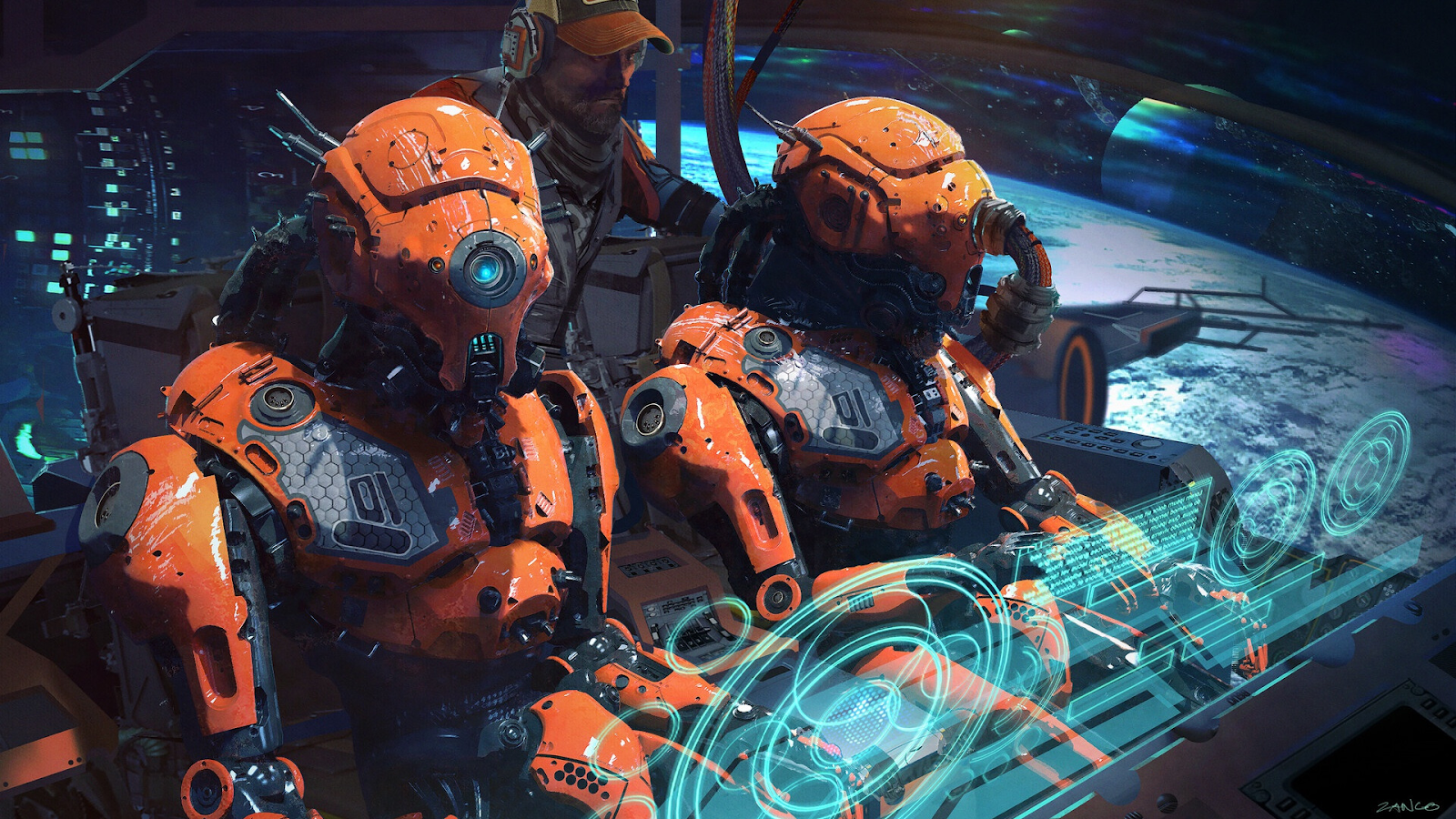One of the goals of MAC Attack is to put the
players in pilot view
This is where they focus in on the active unit, look at its
modules, track its heat, speed, and facing, and learn to exploit the same
factors in the opposing MACs. Of course you’re looking at the battlefield from
a top-down view, but a big appeal of the mech genre is the nitty-gritty feel of
piloting a particular machine.
This one needs to keep moving to avoid getting hit. This one
runs hot if you fire all its lasers. This one needs to wait patiently for a
sitting duck target. This one handles like shit over rough ground. This one absolutely
must not let itself get hit in the rear.
The initiative deck feeds into this. You're never asked
“which of your units should you activate first?”
No! You just pull a card and whoosh, you zoom in on
that unit and you're the pilot now. What do you do?
The way I use counterplay in the game also feeds into this,
and requires breaking it down into two types.
Strategic vs Tactical Counterplay
(Forgive me that Strategic and Tactical might not be the
most accurate terms here, but they are the most memorable, which is more
important)
Strategic Counterplay happens before the game
starts. Like when you show up with a few anti-tank guns and I show up with an
an infantry horde that renders them a bad pick. You bring a melee-focused
faction and I take an army-wide ability that makes my units harder to hit in
melee. That was a good pick for me. You can think of this as an
abstraction of all the logistics, intelligence, and large scale manoeuvring
that happens outside of the scope of the battle.
Tactical Counterplay happens at the table during
the game. You have lots of archers so I avoid a direct charge, advancing
through the woods. You’ve bought a superheavy tank that I’m not well equipped
to fight at long range, so my mortars drop smoke in front of it, forcing it to
stay put or advance into a more vulnerable position.
For MAC Attack, and perhaps in most cases, I want
Tactical Counterplay. Again, this focuses on “What would a good pilot do” more
than “Which of these army lists wins?”
This is a slight revisit of a topic discussed
previously, but I’ve had more time to mull it over.
I've been fine tuning the module list to work toward this
goal.
An example of where I’d gone wrong is a now-deleted weapon
type that I tested out. The gist of it was that the weapon did more damage to
bigger MACs, but was useless against Infantry and Vehicles.
Now this was wide open to strategic counterplay. If your
force is all Light MACs and Auxiliaries then this weapon is junk. Worse,
though, if you bring a bunch of Heavy MACs, because you like big bots, then I’m
coming in with a huge advantage. There isn’t really a tactical answer to it
other than “Keep away from that giant threat”.
I already had a weapon type that executed this idea in a
more tactically interesting way. Piercing weapons let you roll additional
attacks for each hit you cause, meaning it’s very effective against easy
targets, and less effective against difficult targets. Big MACs tend to move
more slowly, because they consume more heat to rush or jump, so by nature these
weapons already tend to favour attacks against heavy MACs.
But the important thing. If you bring a force of heavy MACs
and I have a load of piercing weapons, you can respond to this by, at the very
least, not standing still and giving me easy targets. You might even rush or
make more use of cover, anything that makes my shots more difficult. You can
make tactical decisions to counter my counter.
Active vs Engaged
We’re going down another tangent here, but this still
connects to my goals around Pilot View.
The Active Player is the one taking their turn
right now.
The Engaged Player is the one currently engaging with
the rules.
These aren’t always the same.
I don’t want module effects that need to be remembered by a
player when they’re not currently engaged.
So Plates are fine, because their passive effect occurs when
the non-active player is engaged, specifically when the active (here,
attacking) player says “Okay I hit modules 3, 4, and 6” and the non-active
player (here, the target) looks at their MAC sheet to see what’s actually been
hit. In that moment the non-active player is engaged, so we can expect them to
notice that their Plate has been hit, triggering its effect.
Cloaks are not fine, because their effect (harder to hit at
a certain range bracket) occurs when that player is unengaged, specifically
when their opponent is adding up motion dice and modifiers to calculate the
Target Number of the attack. In this moment the non-active player is unengaged
in a mechanical sense. Even if they’re still paying attention to what their
opponent is doing they aren’t necessarily looking at the specific modules of
the MAC being attacked.
For this reason I’m chopping and changing a lot of the
hardware modules to allow for Tactical Counterplay and for effects that occur
when that unit’s player is Engaged.
The current version of Cloak (pending testing) allows the
unit to set its Motion die to 6 when it doesn’t Move, making itself harder to
hit at the cost of limiting its own attacks. This is a nasty pairing with
Guided weapons (which ignore your own Motion when you attack) but there are
some pretty clear tactical counterplay options available (keep moving, drop
Markers on the unit, forcing them to move or become an easy target, or bait
them into moving with a juicy target of your own).
As always, this is a case of preference, not purity.
I reserve the right to break my own rules, but keeping them in mind is bringing
MAC Attack closer to where I want it to be.
----------------------------------------------------------------------------
This post was originally sent as a reward to all Patreon supporters, and is released freely on this site the week after its original publication.
If you want to support my blog, podcasts, and video content then head over to my Patreon.






















